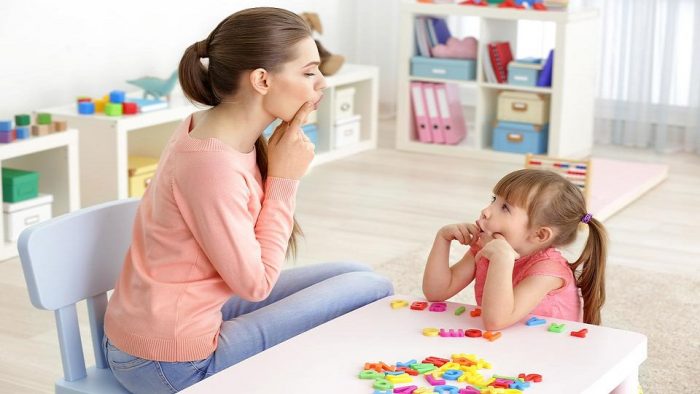Speech pathology experts and speech therapists will all tell you that, whilst a parent might regard their child’s first word as the first milestone in their journey to communicating, it is not. Before a child utters the word ‘dadda’ or ‘mamma’ or whatever that first word might be, they will have demonstrated numerous other language and communication behaviours.
Bear in mind that a child will normally say its first word from around the time it is 12 months old, so that means there is a whole year beforehand for it to begin developing language and communication skills. What might seem to a parent like an adorable action by their 6-month-old baby, such as them ‘cooing’, will also be a sign that they are developing as expected regarding communicating.
Now, when we say communicating, we are not talking about a child who is less than 12 months old having a conversation or even saying a word, but instead, that child displaying actions, behaviours, and signs that, in linguistic terms, it is learning and developing. Outlined below are 7 such communication skills that speech pathology experts tell us that parents should expect to see from their children.
Attention/Joint Attention: Attention occurs when a child can be seen focussing on something such as a new toy, or they recognise a familiar voice, sound or song and remain attentive to it for some time. Double attention is when the child can show attention to both an object or activity and another person such as watching another child play with a toy or an adult singing.
Engagement: This can be seen when a child’s development enables them to feel at ease with those around them and thus form a connection with them. Often this will be followed by what is called an affect which is usually the display of an emotion such as a smile when they recognise a sibling or parent or getting excited when another child walks in the room.
Waiting/Anticipation: If you are having fun with your child or doing something they enjoy such as you tickling their feet, if you stop, do they wait with anticipation until you begin again? If so, this is them displaying this trait and is a sign that they are beginning to understand some core basics of communication that rely on waiting and anticipation such as conversations where one party speaks whilst the other waits to speak.
Imitation: Not only is imitation reportedly the sincerest form of flattery but it also constitutes one of the key ways a child learns to communicate including speaking. Many of the behaviours a child learns in its formative years are via imitation of siblings, parents, and the other young children they interact with, and when they begin to imitate spoken words, the child is learning the language it will speak.
Intention/Initiation: When your child communicates to you in some way that it wants something, it should be welcomed albeit prepare yourself for at least another 20 years of your child asking for something! Joking aside, a child using its hands, its eyes or making sounds to initiate a request for something deliberately, is a significant milestone in their communication development.
Gestures: Young children can make gestures in several ways, but it is when these gestures have a definable meaning that they are definitely on the road to learning the communication skills they need. Pointing, nodding, or shaking their head, waving, jumping, and reaching for something are just some of the physical gestures very young children use to communicate.
Vocalisations: Gesturing will continue and indeed do so even in adulthood as a means to communicate. The child’s next milestone, however, is when they begin adding vocalisations to the gestures they are making to communicate. These include cooing, babbling, squealing, grunting, and humming as though trying to say the letter ’M’, which are some of the vocalisations you can expect to hear from your young child.

